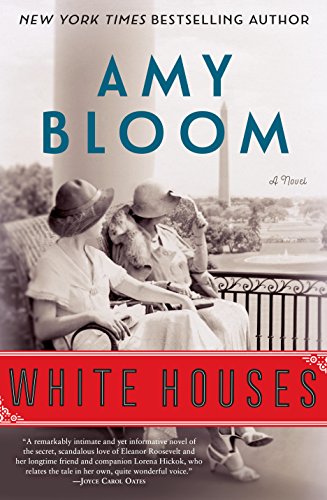White Houses: A Novel
For readers of The Paris Wife and The Swans of Fifth Avenue comes a “sensuous, captivating account of a forbidden affair between two women” (People)—Eleanor Roosevelt and “first friend” Lorena Hickok.
Lorena Hickok meets Eleanor Roosevelt in 1932 while reporting on Franklin Roosevelt’s first presidential campaign. Having grown up worse than poor in South Dakota and reinvented herself as the most prominent woman reporter in America, “Hick,” as she’s known to her friends and admirers, is not quite instantly charmed by the idealistic, patrician Eleanor. But then, as her connection with the future first lady deepens into intimacy, what begins as a powerful passion matures into a lasting love, and a life that Hick never expected to have. She moves into the White House, where her status as “first friend” is an open secret, as are FDR’s own lovers. After she takes a job in the Roosevelt administration, promoting and protecting both Roosevelts, she comes to know Franklin not only as a great president but as a complicated rival and an irresistible friend, capable of changing lives even after his death. Through it all, even as Hick’s bond with Eleanor is tested by forces both extraordinary and common, and as she grows as a woman and a writer, she never loses sight of the love of her life.
From Washington, D.C. to Hyde Park, from a little white house on Long Island to an apartment on Manhattan’s Washington Square, Amy Bloom’s new novel moves elegantly through fascinating places and times, written in compelling prose and with emotional depth, wit, and acuity.
Praise for White Houses
“Amy Bloom brings an untold slice of history so dazzlingly and devastatingly to life, it took my breath away.”—Paula McLain, author of The Paris Wife
“Vivid and tender . . . Bloom—interweaving fact and fancy—lavishes attention on [Hickok], bringing Hick, the novel’s narrator and true subject, to radiant life.”—O: The Oprah Magazine
“Radiant . . . an indelible love story, one propelled not by unlined youth and beauty but by the kind of soul-mate connection even distance, age, and impossible circumstances couldn’t dim . . . Bloom’s goal is less to relitigate history than to portray the blandly sexless figurehead of First Lady as something the job rarely allows those women to be—a loving, breathing human being. And she does it brilliantly.”—Entertainment Weekly













